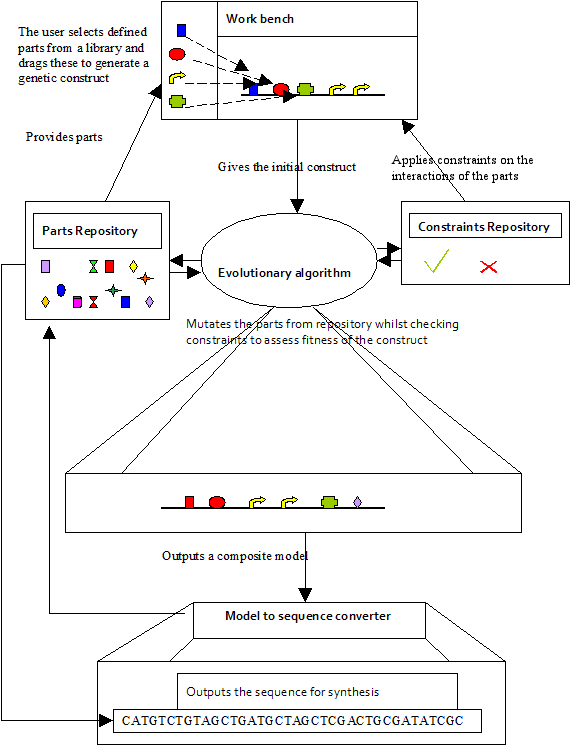Team:Newcastle University/Software
From 2008.igem.org
Newcastle University
GOLD MEDAL WINNER 2008
| Home | Team | Original Aims | Software | Modelling | Proof of Concept Brick | Wet Lab | Conclusions |
|---|
Home >> Software
Our software consists of four main modules, each providing distinct functionality. These communicate with each other, and with external applications, via Web services. One person was Lead Developer for each module, but the developers worked in the same lab, and had frequent formal and informal discussions in order to develop software which works together and provides the necessary functionality.
Components

Workbench (Morgan)
The Workbench is a graphical front end that allows circuits to be designed by hand, using drag-and-drop of icons, and drawing upon the Parts Repository and the Constraints Repository. The designed circuits can then be sent to the EA to be further refined.
Parts Repository (Megan)
The Parts Repository stores information from the literature and various databases about biological parts such as promoters, ribosomal binding sites and protein coding regions. As well as biological information, this includes fragments of CellML that facilitate incorporation of the part into a larger simulation.
Constraints Repository (Nina)
The Constraints Repository stores information about how parts work together, and associated parameters such as binding affinities, POPS, etc., where these are known. This was populated from the literature and by extracting hard-won knowledge from advisors.
Evolutionary Algorithm (Mark)
The EA takes parts from the Parts Repository, assembles them randomly, but using constraints from the Constraints Repository, and evaluates the "fitness" of the resulting circuit depending on a desired input:output mapping. Equivalent parts with different parameters are swapped in and out at random, and fitter circuits selected in an iterative manner.
Download
The software for the above projects is available on the [http://research.ncl.ac.uk/synthetic_biology/ Synthetic Biology at Newcastle] homepage. Due to the size of the projects, they could not be placed on the iGEM wiki.
 "
"

